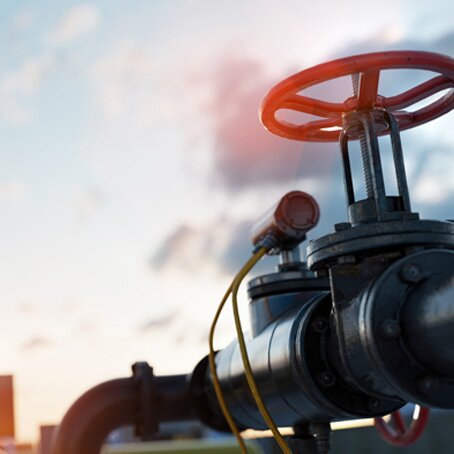What’s in Natural Gas, Anyway?

Has the question, “Just what is natural gas?” ever crossed your mind? If so, we need to go back millyuns and millyuns of years, as the great scientist Dr. Carl Sagan used to say.
Long ago, when plant and animal life died, it got compressed underground with incredible force and was subjected to the earth’s heat for a great duration. The materials were trapped between layers of shale, a soft rock, and this sort of earthly “digestion” gave off natural gas as a byproduct.
Natural gas is first and foremost a hydrocarbon, meaning it is made up of compounds of hydrogen and carbon. The biggest ingredient in natural gas is methane, a compound of one carbon atom and four hydrogen atoms. There are other things in natural gas, too. Hydrocarbons ethane, propane and butane are all found in it, and all are highly flammable, making it an ideal energy source.
What are the benefits of natural gas?
Natural gas is commonly used because it’s a clean-burning energy source. It releases virtually no sulfur dioxide, less soot and less carbon dioxide. Of all fossil fuels, natural gas is the earth's cleanest traditional fuel, according to the American Gas Association, making it more ideal for everyday use.
Along with being an energy efficient fuel, there are many other benefits to using natural gas. Not only is natural gas one of the most affordable energy sources, but it is reliable as well. Natural gas is delivered through an underground pipeline system providing a continuous supply, so it’s always there when you need it. No need to worry about running out or refilling a tank. Natural gas can also be used in many areas or appliances around the home to help provide comfort and peace of mind when it comes to heating and cooking.
Natural Gas Safety
While natural gas is a relatively safe fuel option, interestingly enough, natural gas has no color and no order. “So why does a gas leak smell like that?” you may wonder. That’s because when the gas reaches a local utility, it is injected with mercaptan, an odorant. This is done for everyone’s safety. It’s very important to find the source of a gas leak and shut it off as soon as possible. So if you smell something, say something. Call your local utility right away and leave the vicinity.
Ready for great natural gas with Georgia’s most trusted provider? At Gas South, you get affordable rates and plans and top-rated service—and there’s never a deposit.
Get the great natural gas service you deserve!
Sign Up and Save Help
Help Giving Back
Giving Back My Account
My Account Sign Up
Sign Up











